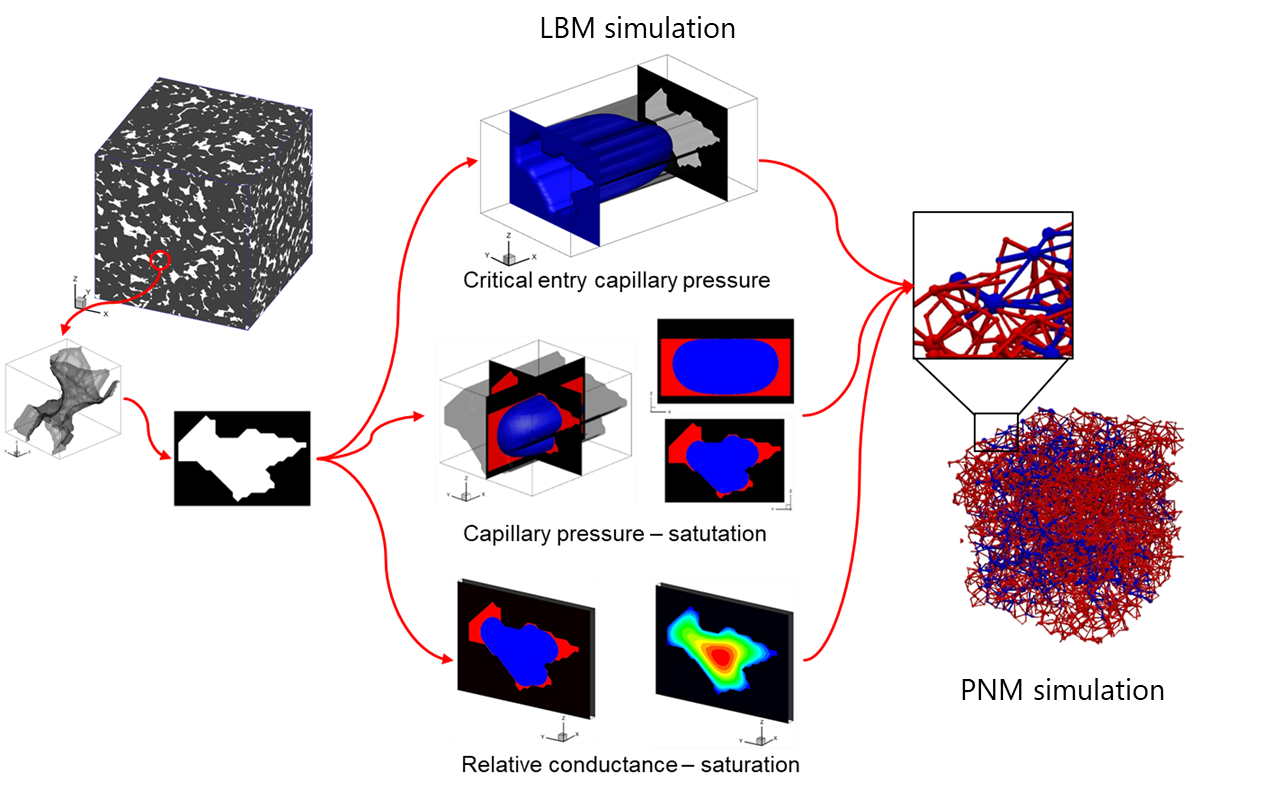4. Predicting two-phase flow properties in random porous geometries with machine learning

Multiphase flow in porous media is very common in many fields, such as oil recovery from reservoirs, ground water flow, moisture transport in building materials. Pore-scale numerical simulation method is a very helpful tool to understand the multiphase flow mechanisms, which includes the direct numerical method and pore network model (PNM). LBM is one popular direct numerical method, which simulates two-phase flow directly in the random porous geometries. It provides accurate two-phase flow properties, but is computationally expensive. PNM simulates two-phase flow in the simplified pore networks, as shown in above figure, which is quite efficient but cannot capture the detailed porous structures. We have proposed one way to combine the accuracy of LBM and the efficiency of PNM [1].
As shown in above figure, when extracting the pore network from a real porous medium, the real throat cross section is maintained, different with conventional PNM which simplifies it into regular shape. The two-phase flow properties in these real throat cross sections are simulated by LBM, which are then incorporated into the improved PNM to simulate two-phase flow in the whole porous medium. For a normal pore network, there are usually tens of thousands of throats. Simulating the two-phase flow properties in all these throats with LBM is complex and time-consuming. Therefore, the main aim of this project is to develop a reliable prediction model to describe the two-phase flow properties in random porous geometries (throats) based on machine learning.
[1] Zhao, J., Qin, F., Derome, D. and Carmeliet, J., 2020. Simulation of Quasi-static Drainage Displacement in Porous Media on Pore-scale: Coupling Lattice Boltzmann Method and Pore Network Model. Journal of Hydrology, p.125080.
Keywords
Pore-scale numerical simulation, two-phase flow in porous media, machine learning
Labels
MSc Thesis/ Duration 6 months
Description
To get the dataset, LBM is firstly used to simulate the two-phase flow properties in a large number of random throat cross sections. This could be achieved by the in-house code of LBM. Then some deep learning technologies such as the convolutional neural network (CNN) model will be used to predict the two-phase flow properties in real throat cross sections based on the dataset obtained, which is the main work of this project. Finally, the developed CNN model will be incorporated into the improved PNM to simulate two-phase flow in the whole porous medium.
Goals and tasks
- Two-phase flow simulation in random porous geometries using the in-house code of lattice Boltzmann method.
- Develop a prediction model to describe the two-phase flow properties in random porous geometries based on machine learning.
- Couple the prediction model into the in-house code of pore network model.
Prerequisites
Coding experience in FORTRAN, C/C++ or python.
Some background in machine learning.
Contact details
Please contact Jianlin Zhao () for further information.